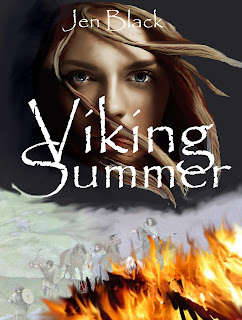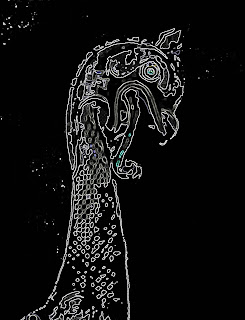Here's the excerpt:
It’s happened. An idea for a novel that started as one situation and has blossomed into a whole plot. I’ve not written any of it yet, but it’s all there in my head from page one to circa page 250’ (Ian writing in his diary 19th March 1985)
The character of Detective John Rebus – complete with estranged wife, young daughter and fragile sanity – seemed to spring fully formed from young English Literature graduate Ian Rankin as he sat in his bedsit in Arden Street, Edinburgh in March 1985. The book’s title Knots & Crosses came first, with the detective’s name coming out of that ‘picture puzzle’ of knotted rope and matchstick crosses of the title. Oxford had ‘Morse’ – a code, so Edinburgh would have ‘Rebus’ – a puzzle.
Knots & Crosses was not intended to grow into a series. In the first draft Rebus died at the end: but during the editing process Rankin decided to give him a reprieve. This was just as well, as when sales of standalone novels Watchman and Westwind were slow, his publisher suggested he revive the detective, who reappeared in Hide & Seek.
The word ‘curmudgeon’ could have been invented for Rebus. The flawed but humane detective we first meet in Knots & Crosses when he’s aged 40 is pretty much the character we see even in the most recent books when Rebus flirts with retirement before returning to the police force when the rules change. Rebus is a professional misanthrope made more cynical by the job he does. He delights in flouting authority; he smokes and drinks; he doesn’t play by the rules. He is the ultimate maverick cop who prefers ‘old-school’ graft to new-fangled modern-day policing methods. He’s a flawed, pessimistic, multi-layered character, a troubled, brooding soul and a cynical loner who can find no solace in faith, who’s obsessed with work, and happiest when propping up the bar of his favourite pub, The Oxford Bar, a glass of IPA in his hand.
The older Rebus has a bit more flesh on the bones – both literally and metaphorically; he is a little more disillusioned, and fighting a few more demons – and not quoting quite so much Walt Whitman or Dostoevsky.
The Rebus novels are written in real time, so Rebus ages along with each book. As the series progresses we learn more about him. Born in 1947, Rebus grew up in Cardenden, Fife, with his brother Michael, the sons of a stage hypnotist and grandsons of a Polish immigrant. Rebus left school at aged 15 to join the army whilst his brother followed in their father’s footsteps. Rebus served in Northern Ireland during The Troubles, before being selected for the SAS in 1971 where he excelled in training but he left the army shortly afterwards, which brought on a nervous breakdown. Following lobbying from the army, Rebus joined the Lothian and Borders Police in 1973. Rebus has been married, but divorced sometime in the 1980s. His ex-wife, Rhona, and his daughter, Samantha, appear frequently in the early novels.
We first meet Rebus in 1987 in Knots & Crosses when he is a Detective Sergeant working on the case of the Edinburgh Strangler, a serial killer who had been abducting and strangling young girls. He is based at the (fictional) Waverley Road police station where he receives anonymous letters containing knotted rope and matchstick crosses…
https://www.ianrankin.net/character/john-rebus/




